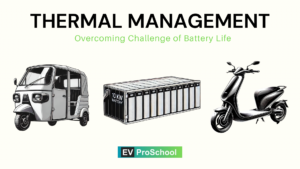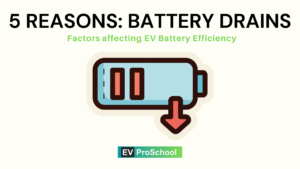Strategy for the Blog Post: “Understanding Battery Cell Sizes (e.g., 4680 Cells, 2170 Cells)”
This blog post will provide an insightful guide to battery cell sizes, explaining common formats like cylindrical, prismatic, and pouch cells, while emphasizing why dimensions matter. The post will dive into Tesla’s 4680 cells, their advantages, and how different cell sizes impact energy density, efficiency, and performance. It should be engaging for both technical and non-technical readers.
1. Define the Blog’s Objectives
Purpose:
- Introduce readers to the importance of battery cell sizes and formats.
- Explain how different dimensions (e.g., 4680 cells) affect energy density, thermal management, and overall EV performance.
- Highlight the advantages of emerging battery cell designs in the EV industry.
Target Audience:
- EV enthusiasts and curious readers interested in the science behind EV batteries.
- Engineers, researchers, or industry professionals following advancements in battery technology.
SEO Focus Keyword:
“Battery cell sizes”
Supporting Keywords:
- Cylindrical cells
- Prismatic cells
- Pouch cells
- 4680 battery cells
- 2170 cells
- EV battery formats
2. Blog Outline
Title Options:
- Main Title: Understanding Battery Cell Sizes: Cylindrical, Prismatic, and Tesla’s 4680 Revolution
- SEO-Friendly Title: Battery Cell Sizes Explained: 4680, 2170, and the Future of EV Batteries
Introduction: Why Do Battery Cell Sizes Matter?
- Start with a hook:
“From powering your smartphone to driving electric vehicles, battery cells come in all shapes and sizes. But did you know that the dimensions of these cells play a crucial role in how efficient, powerful, and safe they are?” - Set the context: Introduce the different types of battery cell formats and their applications in EVs.
- Preview the post: Explain that this blog will explore cell formats, Tesla’s 4680 cells, and how dimensions impact performance.
Section 1: Types of Battery Cells (Cylindrical, Prismatic, and Pouch)
1. Cylindrical Cells:
- What They Are:
- Cylindrical cells resemble traditional AA batteries but come in larger dimensions.
- Common types: 18650, 2170, 4680 (Tesla’s next-gen cell).
- Advantages:
- Thermal Efficiency: Dissipates heat better due to uniform shape.
- Manufacturing Scalability: Easy to produce and widely used.
- Structural Integrity: High mechanical stability under pressure.
- Disadvantages:
- Wastes space when packed together (gaps between cells).
- Applications:
- Common in Tesla, Rivian, and other EV brands.
2. Prismatic Cells:
- What They Are:
- Rectangular-shaped cells with a rigid metal or aluminum casing.
- Advantages:
- Space Optimization: Compact design with better volumetric efficiency.
- Simpler Assembly: Fewer cells needed for a high-capacity pack.
- Disadvantages:
- Heavier due to metal casing.
- Lower heat dissipation compared to cylindrical cells.
- Applications:
- Used in BMW i3 and commercial EVs.
3. Pouch Cells:
- What They Are:
- Flexible, flat cells encased in a foil pouch.
- Advantages:
- Lightweight Design: No heavy casing.
- Customizable Shape: Fits in small, irregular spaces.
- High Energy Density: More energy in a smaller footprint.
- Disadvantages:
- Vulnerable to swelling and punctures.
- Requires strong external support to maintain integrity.
- Applications:
- Common in compact EVs and high-performance sports cars.
Section 2: What Are Tesla’s 4680 Cells?
Key Features of 4680 Cells:
- Size: 46mm diameter, 80mm height.
- Format: Cylindrical but larger than previous formats (e.g., 2170 and 18650).
Advantages of 4680 Cells:
- Higher Energy Density:
- Larger size allows more energy storage per cell.
- Lower Cost:
- Fewer cells needed per battery pack, reducing manufacturing complexity.
- Improved Thermal Management:
- Tabless design reduces heat generation and enables faster charging.
- Greater Structural Efficiency:
- Acts as a load-bearing structure, reducing vehicle weight.
Applications:
- Tesla Model Y and Cybertruck.
Section 3: How Do Battery Cell Sizes Affect Performance?
1. Energy Density:
- Larger cells like 4680 provide higher energy density but may sacrifice flexibility in pack design.
- Smaller cells (e.g., 18650) are easier to arrange but require more space.
2. Thermal Management:
- Smaller cells dissipate heat faster, reducing the risk of overheating.
- Larger cells like 4680 overcome this with innovations like tabless designs.
3. Manufacturing Efficiency:
- Larger cells require fewer interconnections, simplifying assembly and reducing cost.
- Smaller cells are more modular, allowing easier scaling.
Section 4: Choosing the Right Cell Format for EVs
- Key Factors to Consider:
- Vehicle type (e.g., compact EVs vs large SUVs).
- Performance priorities (range, cost, safety).
- Thermal management needs.
- Real-World Examples:
- Tesla prefers cylindrical cells for scalability and cost-efficiency.
- BMW uses prismatic cells for compact design in passenger EVs.
Section 5: The Future of Battery Cell Sizes
- Solid-State Batteries:
- Combining the energy density of pouch cells with the safety of prismatic designs.
- Larger Cylindrical Cells (Beyond 4680):
- Possibility of even larger cells to enhance structural efficiency.
- Sustainability Trends:
- Designing cells for recyclability and second-life applications.
Conclusion: Why Dimensions Matter in Battery Technology
- Summarize the key takeaways: Different battery cell sizes and formats offer unique trade-offs in energy density, efficiency, and cost.
- Highlight Tesla’s 4680 cells as a major innovation in cylindrical formats.
- End with a call-to-action:
“Curious about how battery innovations are shaping the EV industry? Check out our guide to EV battery chemistry next!”
3. Writing Style and Tone
- Tone: Professional yet approachable, suitable for a 10th-grade reader.
- Use examples and comparisons:
- “Think of cylindrical cells as soda cans—they’re easy to stack, but you’ll have gaps between them, unlike neatly packed prismatic cells.”
4. Suggested Visuals and Graphics
- Infographic: Comparison of cylindrical, prismatic, and pouch cells with pros/cons.
- Diagram: Cross-section of a 4680 cell with key features labeled.
- Chart: Performance comparison of 4680 vs 2170 vs 18650 cells.
- Real-Life Photos: Tesla Model Y showcasing the 4680 cell.
5. SEO Optimization Strategy
Focus Keyword:
“Battery cell sizes”
Supporting Keywords:
- Cylindrical cells
- Tesla 4680 cells
- EV battery formats
- Prismatic and pouch cells
Meta Description:
“Learn about battery cell sizes like 4680 and 2170! Discover the pros and cons of cylindrical, prismatic, and pouch cells, and how dimensions impact EV battery performance.”
Alt Text for Feature Image:
“Comparison of cylindrical, prismatic, and pouch battery cells with Tesla 4680 highlighted for EV performance.”
6. Blog Length
- Target: 1,800–2,200 words, balancing technical depth with clarity.
This strategy ensures the blog is informative, engaging, and SEO-optimized, appealing to a wide range of readers while showcasing the importance of battery cell sizes in the EV industry.


